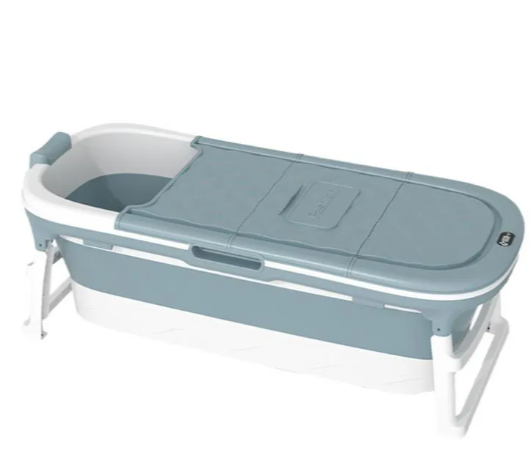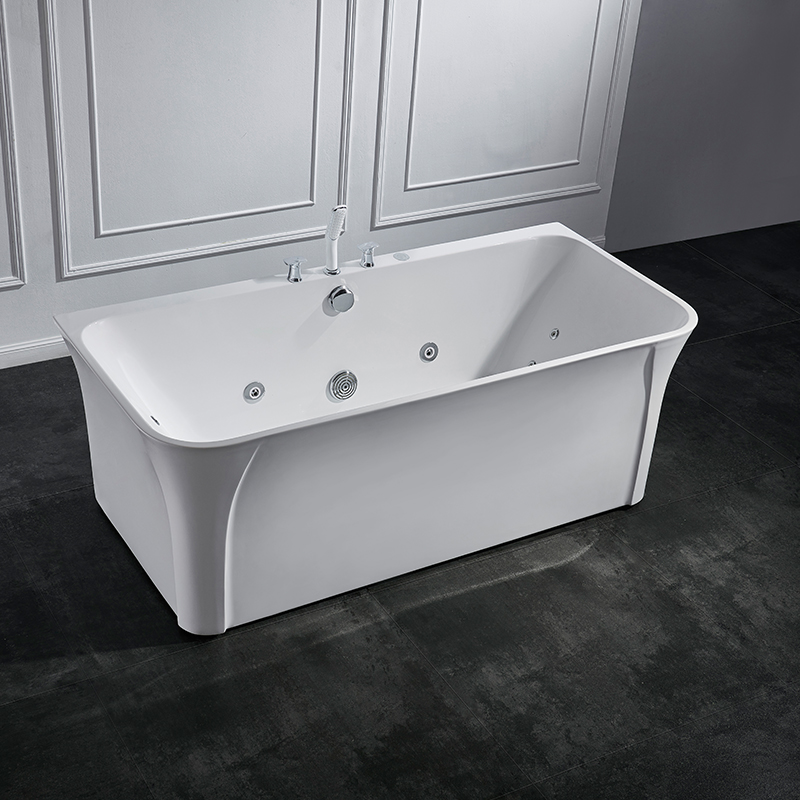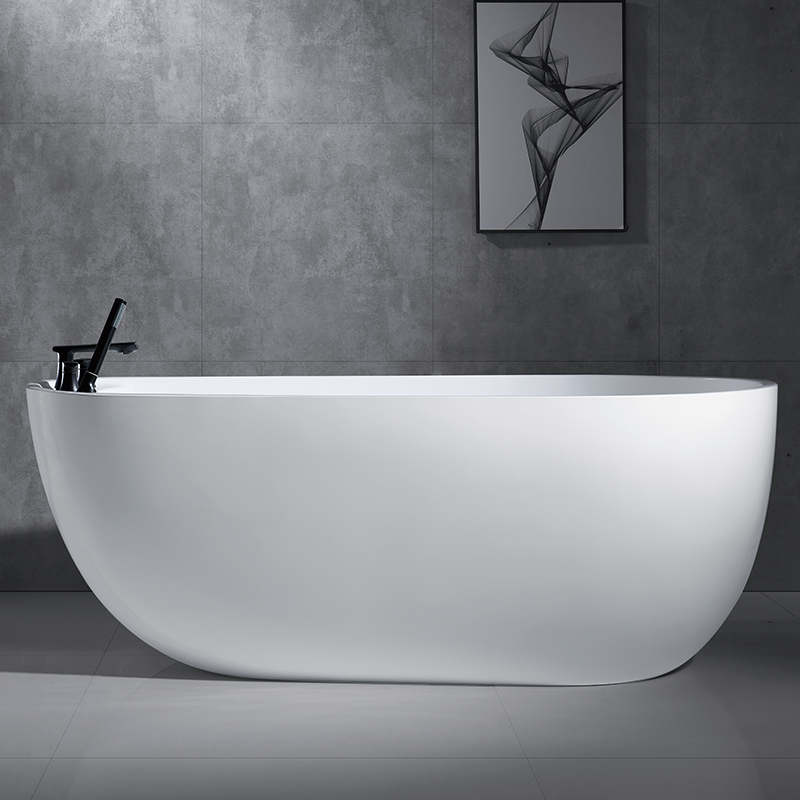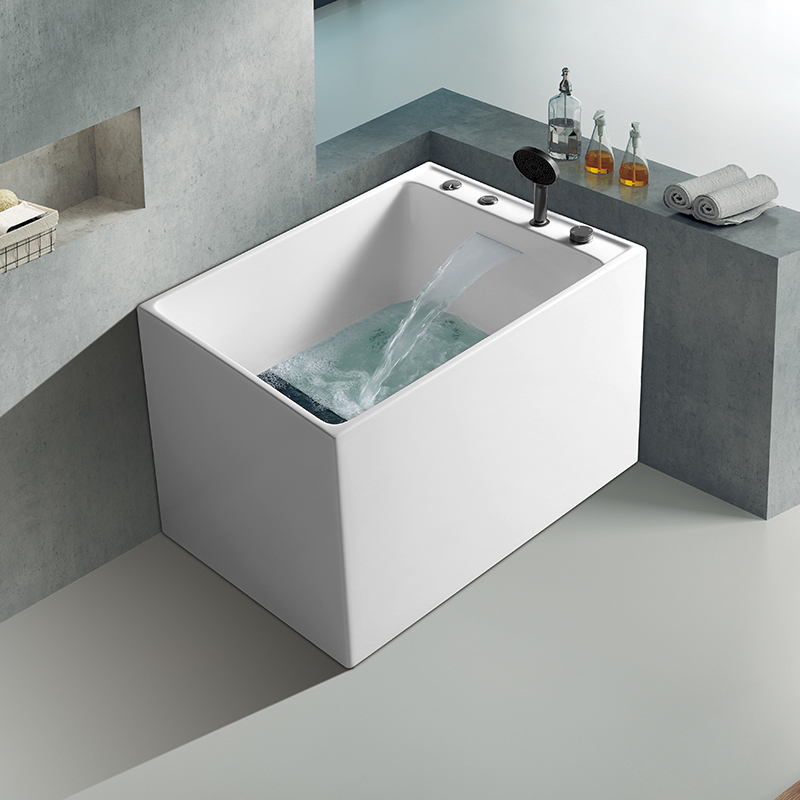The durability Dilemma of folding bathtubs: Hidden Concerns Behind Convenience
In modern home life, folding bathtubs have attracted the attention of many consumers with their numerous advantages such as space-saving and strong portability. However, behind the seemingly beautiful appearance, the durability issue of folding bathtubs is like a shadow, casting a shadow over the user experience and becoming an undeniable drawback.

一、 Material limitations: Inherent insufficiency in durability
Folding bathtubs are mostly made of materials such as plastic. Although this endows them with the characteristics of being lightweight and easy to fold, it also poses a hidden danger to their durability. Plastic materials are prone to aging after long-term use. The erosion of time makes plastic gradually hard and brittle, and fine cracks may appear on the surface. These cracks are like a fragile defense line. Once subjected to a slightly larger external force impact, they may rapidly expand, causing the bathtub to break. Moreover, prolonged exposure to sunlight will accelerate the aging process of plastic, significantly reducing the service life of the folding bathtub. If it is placed in a high-temperature environment, such as near a radiator or hot water pipe, the plastic may deform, lose its original shape and structural stability, and can no longer be folded or used normally. It is like a soulless shell, and it is difficult to provide users with a comfortable bathing experience.
二、 Wear and Tear of Folding Structures: Hidden dangers under frequent Use
The core highlight of a folding bathtub lies in its foldability, but this feature is also the "Achilles' heel" of its durability. Each time it is folded and unfolded, it causes certain wear and tear to the structure and material of the folded part. Just like a folding fan that opens and closes repeatedly, if the number of times increases, the connection points between the fan ribs will become loose. Under frequent operation, the hinges and connecting parts of the folding bathtub will gradually lose their original tightness and flexibility. Over time, loosening, deformation or even breakage may occur. Once the folding structure malfunctions, the bathtub will be unable to stably support the user's weight and water weight, just like a dilapidated building on the verge of collapse, with the risk of collapse at any time. This brings great safety hazards to the user's use and greatly reduces the practicality of the folding bathtub, making it like chicken ribs, tasteless to eat and a pity to throw away.
三、 Vulnerable to External Force Damage: A Fragile "body"
Compared with the sturdy traditional bathtubs, folding bathtubs are particularly fragile and have a weaker resistance to external forces. In daily use, even an accidental collision or heavy pressure may leave indelible marks on the folding bathtub. For instance, accidentally dropping a heavy object on it may cause the surface of the bathtub to dent or crack. Or during the movement, it may be scratched by other hard objects, leaving scratches. These damages not only affect the appearance but also reduce the waterproof performance and service life of the bathtub. It is like a delicate flower, unable to withstand the damage of wind and rain, and requires extra care from users. However, this is contrary to people's expectations for convenient and practical home products. It seems to add an invisible shackle to users' usage, making them feel as if they are walking on thin ice during the usage process, constantly worrying about causing damage to the folding bathtub.
四、 Environmental Protection and Health Risks: An Extension of Durability Issues
From a longer-term perspective, the problems caused by the poor durability of folding bathtubs are not limited to their own service life. Due to the aging and damage of plastic materials, the disposal of discarded folding bathtubs has become a difficult problem. A large amount of waste plastic is difficult to degrade, causing serious pollution to the environment. It is like putting a heavy "garbage coat" on Mother Earth, affecting ecological balance and the sustainable development of mankind. Furthermore, if the materials of the folding bathtub do not meet environmental protection standards, harmful substances may be released during use, posing a potential threat to human health. This undoubtedly plants a "time bomb" for health while users enjoy the convenience of bathing, exposing people to risks without realizing it and making the convenience of the folding bathtub not worth it.
五、 Insights and Suggestions for Consumers
In the face of the poor durability of folding bathtubs, consumers need to remain rational and cautious when making a purchase. One should not merely be attracted by its superficial advantages such as space-saving and affordable prices, but pay more attention to the material quality, manufacturing process and brand reputation of the product. When making a purchase, carefully check the material description of the product and choose a folding bathtub made of high-quality, environmentally friendly and durable materials, such as some specially treated plastics or composite materials, which have relatively better anti-aging performance and durability. At the same time, understand the folding structure of the product and the quality of the connecting parts, and choose a product with a sturdy structure and exquisite craftsmanship to ensure that the folding bathtub can maintain stability and reliability during long-term use. In addition, consumers can also refer to the evaluations and usage experiences of other users to have a more comprehensive understanding of the advantages and disadvantages of the product. During use, users should also pay attention to the correct operation and maintenance of the folding bathtub, avoid direct sunlight and high-temperature environments, and minimize unnecessary collisions and heavy pressure to extend its service life. If you find that the folding bathtub is damaged or has problems, you should contact the manufacturer or merchant in time for repair or replacement. Do not continue to use products with potential safety hazards.
Although folding bathtubs bring convenience to users in some aspects, their durability issue is like an insurmountable obstacle, affecting users' experience and the long-term value of the product. Only when consumers fully recognize these issues during the selection and use process and take corresponding measures can they ensure a certain degree of convenience in use while minimizing the troubles and losses caused by poor durability, and make the folding bathtub truly become a practical and reliable product in home life. Otherwise, the folding bathtub might only become a fleeting "passer-by" in home life. After the brief convenience, what remains is endless regret and disappointment.




